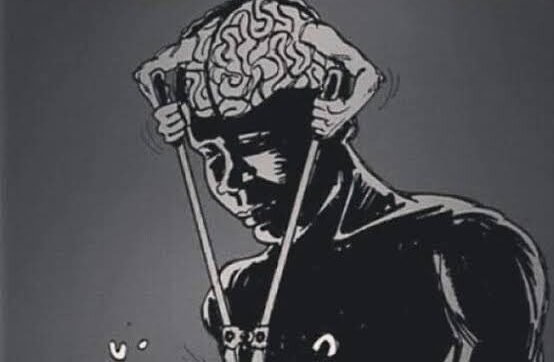– Abul Faiz Azmi
Khansa hurried to her mother, holding up a picture, and said, “Mom, I need to fill this with colors. Which colors would look best?” Her mother was busy in the kitchen and didn’t pay attention to her daughter. After a while, Khansa repeated her question. Distracted, her mother replied, “Go ask your father.”
Khansa then went to her father’s room, showed him the picture, and asked him for advice. Her father, who was busy writing, noticed the paper in her hand, which he had been searching for since yesterday. Smiling, he asked, “Dear, where did you find this?” Innocently, Khansa replied, “On your table.” Her father asked, “What is in the picture?” Khansa replied, “It’s a horse tied to a chair.”
Pleased with her answer, he asked her to call her brother. Khansa ran to her brother and said, “Father is calling you.” When both of them arrived at their father’s room, he was closely examining the picture, flipping it over. Smiling at them, he gestured for them to sit down. After a brief silence, they began discussing their well-being and studies. During this, he showed the picture to his son and asked, “Abdullah, what does this mean?” Khansa quickly interjected, “Father, I want to answer first!” Her father said, “Alright, you go ahead.”
Khansa replied, “The picture shows a horse tied to a chair to keep it from running away.” It was Abdullah’s turn next, but he couldn’t think of anything different to say since his sister had already expressed what he had thought. Holding the picture, he sat quietly, deep in thought. His father encouraged him, “Abdullah, now you tell me.” Abdullah took another careful look at the picture and said, “It’s a general message that we should tie up our animals, or else they might wander off.” His father questioned again, “Animals are usually tied in designated areas, but this horse is tied to a chair.”
This question made Abdullah think, and after a moment, he responded with a smile, “Both the chair and the horse are important. It shows that valuable things should be carefully guarded.” His father asked further, “Couldn’t they have made something else to secure valuable things?” Abdullah shook his head, signaling he didn’t know. His father continued, “There are animals stronger than horses; why is this horse tied to a chair?” Abdullah said he didn’t know.
The exchange of questions and answers went on between father and son, with Khansa listening closely. Their mother, having finished her work, joined them in the room and observed the conversation intently. Realizing that the entire family was now present and interested, the father addressed his children, “Both of your answers were correct, but there’s something more that this picture conveys.” This caught their mother’s attention as well.
Khansa said, “Dad, please tell us. We’ve shared what we understood.” After a brief silence, the father showed them the picture and explained, “If a goat were tied to this chair, it would drag it along and even break free from it. But a horse is much stronger and faster than a goat. Moreover, it is full of self-respect and dignity.”
At this, Abdullah asked, “So what does tying the horse to the chair imply?”
The father explained, “By tying the horse to the chair, it is trying to show that when someone loses self-respect and honor, they fall deeper into the trap of slavery. Eventually, they become mentally enslaved. Despite having strength and power, they are so ensnared by the shackles of slavery that they fail to realize they are capable of achieving something. Just as individuals become slaves, so do nations, both mentally and physically. And the slavery of nations lasts a long time.”
Credit: Nuqush-e-Raah (Urdu Magazine)


